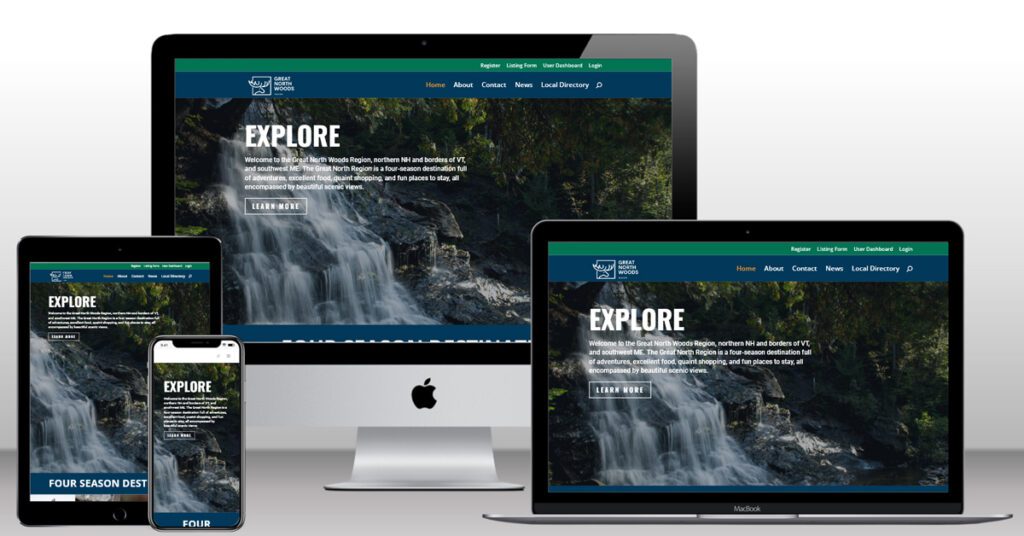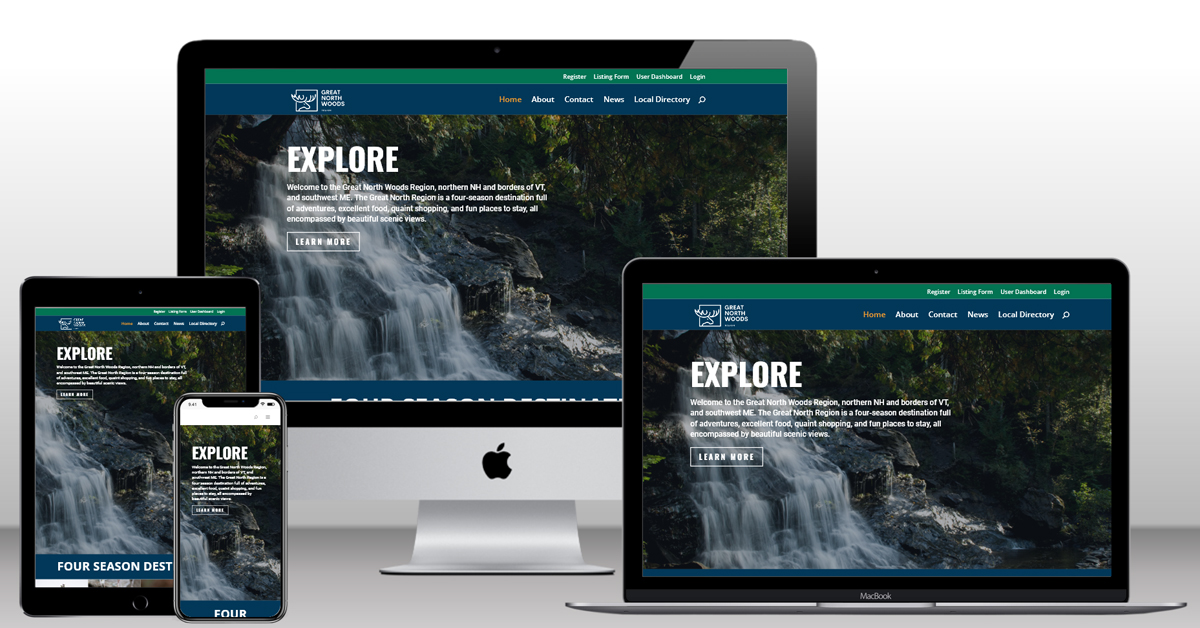In the ever-evolving landscape of marketing, finding your target audience is the cornerstone of a successful strategy. Yet, all too often, this fundamental step is overlooked, leaving businesses adrift in the sea of countless marketing opportunities. Today, we’re diving into the world of Sunnvalley, a marketing agency based in New Hampshire, to uncover the pivotal role of defining a target market and crafting an effective marketing plan.

The Essence of a Target Audience
Before we plunge into the realms of Sunnvalley’s marketing expertise, let’s clarify what finding a target audience truly is. You see, the term “target audience” can be somewhat elusive, and often misconstrued or described differently by various companies. However, at its core, it refers to the specific group of individuals a business aims to sell its products or services to.
In essence, it’s the “who” behind your marketing efforts. Why does this matter? The essence of targeting a specific audience in marketing boils down to the pursuit of precision. Defining your target audience serves as the guiding star for various aspects of your marketing strategy, from content creation to channel selection.
Six Crucial Steps
Here, we break down the essence of a target audience into six crucial steps, showcasing how Sunnvalley’s approach can help you build a compelling brand voice and bolster your marketing game:
- Find Your Existing Audience: Begin by identifying those who have already shown interest in your business. This includes your current customer base, website visitors, and social media followers.
- Identify Characteristics: Delve deeper into your existing audience to identify common characteristics, such as demographics, interests, and behaviors. This information lays the foundation for defining your target audience.
- Create Buyer Personas: Building detailed buyer personas is a key step in the process. These personas represent fictional, yet highly accurate, representations of your ideal customers. They help you understand the motivations, needs, and preferences of your target audience.
- Market Research: Conduct comprehensive market research to gain a profound understanding of your target audience. This involves studying their pain points, desires, and where they spend their time online. Click here to find out more about marketing for newbies.
- Utilize Marketing Tools: Leverage marketing tools to determine the characteristics of your target audience. These can include analytics platforms, social media insights, and CRM software, providing data-driven insights into your audience’s behavior.
- Crafting Your Brand Voice: Understanding how to speak to each persona is the final piece of the puzzle. Tailor your content and messaging to resonate with your target audience’s preferences and pain points. Click here for more info about brand voice.
Expertise in Target Audience Marketing
Now that we’ve established the importance of finding a target audience, let’s delve into how Sunnvalley, a prominent marketing agency based in New Hampshire, excels in harnessing this power for businesses.
Sunnvalley understands that the heart of effective marketing lies in a deep understanding of your target audience. By diligently following the six steps mentioned earlier, they pave the way for businesses to resonate with their audience and generate meaningful results.
What sets Sunnvalley apart is their commitment to tailoring marketing strategies that are not just effective but also efficient. They have an eye for recognizing the most impactful marketing channels, a skill honed through their dedication to understanding the intricacies of their client’s target market.
The agency’s devotion to market research is commendable, as they leave no stone unturned in their pursuit of audience insights. They utilize public statistics, search engines, and social media platforms to uncover the behaviors and preferences of their client’s target audience. By doing so, they acquire a profound understanding of the market landscape, enabling them to craft content and messages that resonate.
Moreover, Sunnvalley’s mastery extends to the art of crafting buyer personas. These personas are not merely templates; they are living, breathing representations of your ideal customers. Through their personas, they create a vivid picture of what drives their target audience, enabling them to connect on a more personal level.
Their strategies are data-driven, with marketing tools providing insights into their audience’s characteristics and behavior. With this data, Sunnvalley ensures that its messaging is finely tuned to speak directly to the hearts and minds of its target audience.
Unlocking Success Through Target Audience-Centric Approach
As Sunnvalley proficiently navigates the marketing terrain, it’s evident that its success is deeply rooted in its commitment to a target audience-centric approach. This approach, driven by the six key steps outlined earlier, ensures that every marketing effort yields the greatest impact.
Sunnvalley’s story showcases the importance of starting right from the very beginning of your marketing journey. Whether you’re a seasoned business owner or just stepping into the realm of marketing, it’s essential to recognize the pivotal role of understanding your target audience. Click here for more tips on building a memorable brand.
When you’re aware of your target audience, the marketing world opens up to a multitude of opportunities. You can pinpoint the most effective marketing channels that align with your audience’s preferences. Also, create content and messages that truly resonate, driving engagement and conversions. Lastly make informed decisions based on data, optimizing your marketing efforts for maximum impact.
In the rapidly changing landscape of marketing, the value of a target audience cannot be overstated. It’s the compass that guides you through the vast ocean of marketing possibilities. When you have a clear target, you can navigate your way to success with precision and confidence.
Concluding
As we conclude our journey through the world of Sunnvalley, a prominent marketing agency in New Hampshire, it’s clear that their success story is intrinsically tied to their mastery of understanding and harnessing the power of a target audience.
Example of finding an existing target audience
In this scenario, we’ll consider a small, local business: a boutique fitness studio named “FitLife Wellness Center” in a suburban area.
Step 1: Find Your Existing Audience
FitLife Wellness Center has been in business for a few years, so they already have some existing customers. By examining their current client base, they can identify certain commonalities:
- Age: The majority of their clients are between 25 and 45 years old.
- Gender: Their clients are evenly split between males and females.
- Location: Most clients come from within a 10-mile radius.
- Income: Clients generally have a middle to upper-middle-income level.
Step 2: Identify Characteristics
Beyond demographics, FitLife digs deeper to identify the characteristics of its existing audience:
- Interests: Many clients are interested in yoga, meditation, and holistic wellness.
- Lifestyle: Their clients lead active lifestyles and prioritize physical and mental well-being.
- Pain Points: They often struggle with stress, work-life balance, and maintaining a healthy lifestyle.
Step 3: Create Buyer Personas
From this information, FitLife Wellness Center can create two buyer personas:
- Persona: “Stressed Steve”
- Demographics: Male, 30-40 years old, middle-income.
- Characteristics: High-stress job, interested in holistic wellness, struggles to find work-life balance and maintain a healthy lifestyle.
- Persona: “Yogi Yara”
- Demographics: Female, 25-35 years old, middle-income.
- Characteristics: Active lifestyle, interested in yoga and meditation, values mental well-being and stress relief.
Step 4: Conduct Market Research
FitLife conducts market research to understand their target audience better. They use online surveys, collect data on local wellness trends, and engage with their clients in focus groups to gain insights into the specific challenges and preferences of Stressed Steve and Yogi Yara.
Step 5: Use Marketing Tools
FitLife leverages marketing tools, such as Google Analytics and social media insights, to further understand the online behavior and engagement patterns of Stressed Steve and Yogi Yara. They track which social media platforms and online communities they frequent and what type of content they engage with.
Step 6: Craft Targeted Messaging
Armed with this information, FitLife creates marketing messages tailored to each persona. Stressed Steve, focus on stress relief, work-life balance, and quick, efficient workouts. For Yogi Yara, the emphasis is on yoga and meditation classes, mental well-being, and mindfulness.
By following these steps, FitLife Wellness Center has successfully found and defined its target audience. They know who their ideal customers are, what they care about, and how to reach them effectively. This enables them to tailor their marketing strategies, content, and offerings to meet the specific needs and desires of Stressed Steve and Yogi Yara, ultimately leading to higher customer engagement and growth for their fitness studio.

